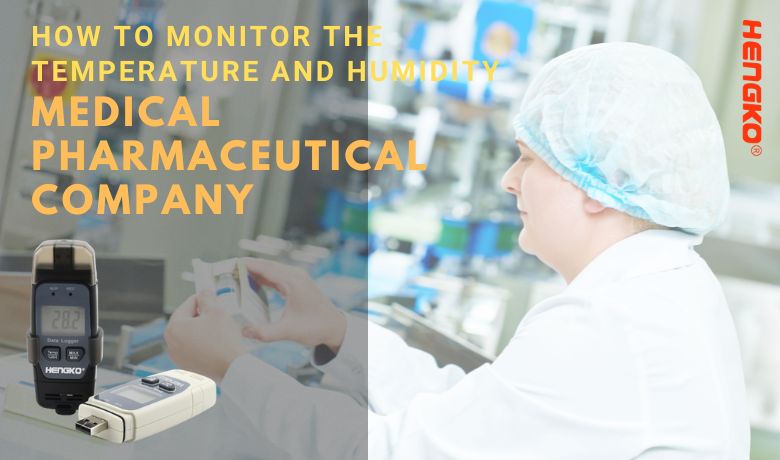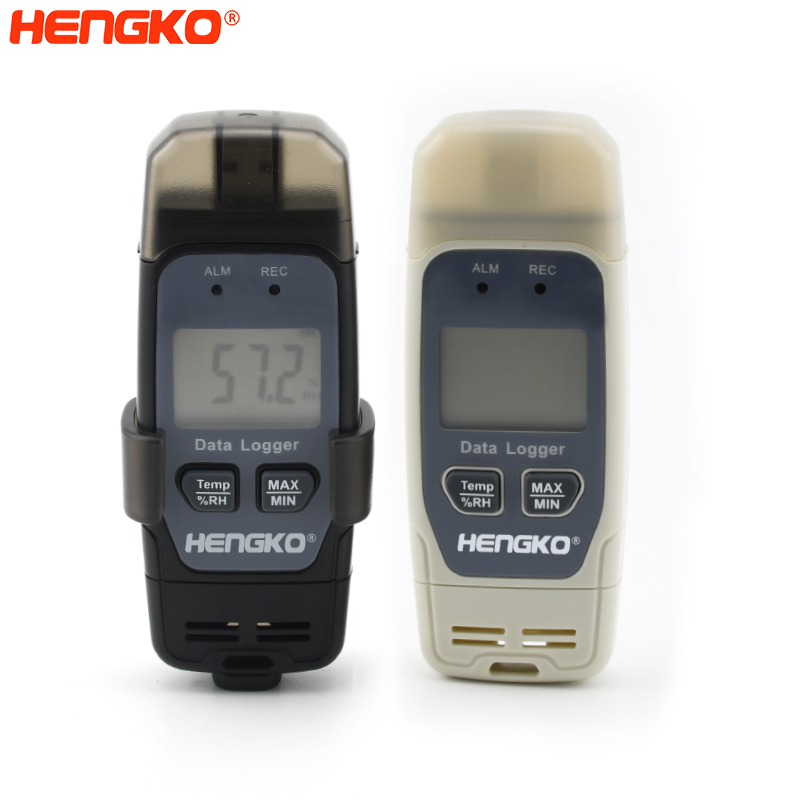
How to Monitor the Temperature and Humidity in the Freezer of a Medical Pharmaceutical Company ?
Monitoring the temperature and humidity in the freezer of a medical pharmaceutical company is critical for ensuring the quality and safety of the stored products. Here are 6 steps to follow:
1. Determine the ideal temperature and humidity range for the products you are storing.
2. Choose a reliable and accurate temperature and humidity monitoring system that is designed for use in freezers.
3. Install the monitoring system in the freezer according to the manufacturer's instructions.
4. Set up an alert system that will notify designated personnel if the temperature or humidity levels fall outside of the desired range.
5. Regularly review the monitoring data to ensure that the temperature and humidity levels are consistently within the desired range.
6. Document all temperature and humidity monitoring activities in accordance with applicable regulations and industry standards.
By following these steps, medical pharmaceutical companies can ensure that their freezers are properly monitored and that stored products remain safe and effective.
So then let check for details how we can do it:
As a medical and pharmaceutical company, it's critical to ensure the quality and safety of your products, including monitoring the temperature and humidity in your freezers. Proper temperature and humidity control are essential for preserving the integrity of many pharmaceutical products, including vaccines, blood products, and biological samples. In this blog, we'll discuss the steps you can take to monitor the temperature and humidity in your freezer and ensure that your products remain safe and effective.
1. Determine the Ideal Temperature and Humidity Range
It's important to note that different products may have different temperature and humidity requirements, so you'll need to monitor the freezer based on the most stringent requirements of the stored products. Once you've determined the ideal temperature and humidity range, you can select the appropriate monitoring system.
2. Choose a Reliable and Accurate Temperature and Humidity Monitoring System
Digital thermometers are a simple and cost-effective option for monitoring the temperature in your freezer. They typically use a probe to measure the temperature and display the reading on a digital screen. Data loggers are a more advanced option that can record temperature and humidity data over time, allowing you to track temperature and humidity trends in your freezer. Wireless monitoring systems are the most advanced option, allowing you to remotely monitor temperature and humidity levels in real-time and receive alerts when levels fall outside the desired range.
When selecting a monitoring system, consider the accuracy required for your products and the system's ease of use. Consider whether the system is compatible with your existing equipment and whether it requires any special installation or maintenance.
3. Install the Monitoring System in the Freezer
For example, if you're using a digital thermometer with a probe, you'll need to place the probe in the center of the freezer, away from any walls or other heat sources. If you're using a data logger, you may need to place multiple sensors in different locations throughout the freezer to ensure that you're accurately capturing temperature and humidity data.
When installing the monitoring system, follow all instructions carefully and ensure that the sensors are securely in place. You may also want to label the sensors and note their location in your documentation, so you can easily identify them later if necessary.
4. Set Up an Alert System
Once the monitoring system is installed, it's important to set up an alert system that will notify designated personnel if the temperature or humidity levels fall outside the desired range. This could include email or text message alerts, audible alarms, or other notification methods.
The specific alert system you use will depend on the monitoring system you've selected and your organization's needs. For example, suppose you're using a data logger. In that case, you can set up email alerts sent to designated personnel when the temperature or humidity levels fall outside the desired range. Using a wireless monitoring system, you may receive alerts through a smartphone app or web portal.
When setting up the alert system, define clear protocols for how designated personnel should respond to alerts. This may include procedures for checking the freezer and confirming the accuracy of the temperature and humidity readings, as well as procedures for taking corrective action if necessary.
5. Maintain and Calibrate the Monitoring System
Once the monitoring system is in place, it's important to maintain and calibrate it regularly to ensure that it continues to provide accurate readings. This typically involves performing regular maintenance tasks, such as changing batteries or cleaning sensors and periodically calibrating the system to ensure that it measures temperature and humidity levels correctly.
When calibrating the monitoring system, it's important to use a reference thermometer or hygrometer that has been calibrated to a traceable standard. It will ensure that your monitoring system is accurate and reliable and will help you avoid the risk of storing products at the wrong temperature or humidity levels.
6. Record and Analyze Temperature and Humidity Data
For example, suppose you notice that the temperature in your freezer consistently rises above the desired range during a particular time of day. This may indicate an issue with the freezer's cooling system or the door being left open too long. By analyzing the data, you can take corrective action to address the issue and prevent future temperature excursions.
In addition to analyzing temperature and humidity data on an ongoing basis, it's important to maintain detailed records of the data collected. This documentation can be used to demonstrate compliance with regulatory requirements and to provide evidence of the safety and efficacy of your products.
In the medical field, various medical auxiliary devices are indispensable as auxiliary tools for medical diagnosis and treatment. For example, the COVID-19 test kit, blood test kit, rapid microbiological test tool and dip slides are various testing tools used to monitor the sanitation level of various institutions.
There are many freezing rooms and cold storage rooms in pharmaceutical companies or medicines. HENGKO 7/24 Medical Disease Control Temperature and Humidity Monitoring System can monitor the temperature and humidity in the freezer around the clock. Once it exceeds the preset range, it can notify the personnel to intervene in time.
After the HENGKO temperature and humidity data logger is installed at a fixed point, the temperature and humidity data in the freezer will be measured and recorded in real-time through the RHT series sensor, and the signal will be transmitted to the temperature and humidity IOT solution software to provide timely warning and timely notification to personnel.
Compared with other temperature and humidity solutions, HENGKO's temperature and humidity monitoring system is more flexible, convenient and cost-saving. The temperature and humidity recorder is compact and can be easily installed in the freezer or refrigerator in the freezer. The system is easier to maintain and replaces all manual measurement tasks, saving personnel time, cost and energy, and ensuring accuracy and safety.
So if you also have questions or any questions for the Monitor the Temperature and Humidity in the Freezer of a Medical Pharmaceutical Company, please feel free to contact us for details by email ka@hengko.com , we will send it back within 24-hours.
Post time: Dec-28-2021






